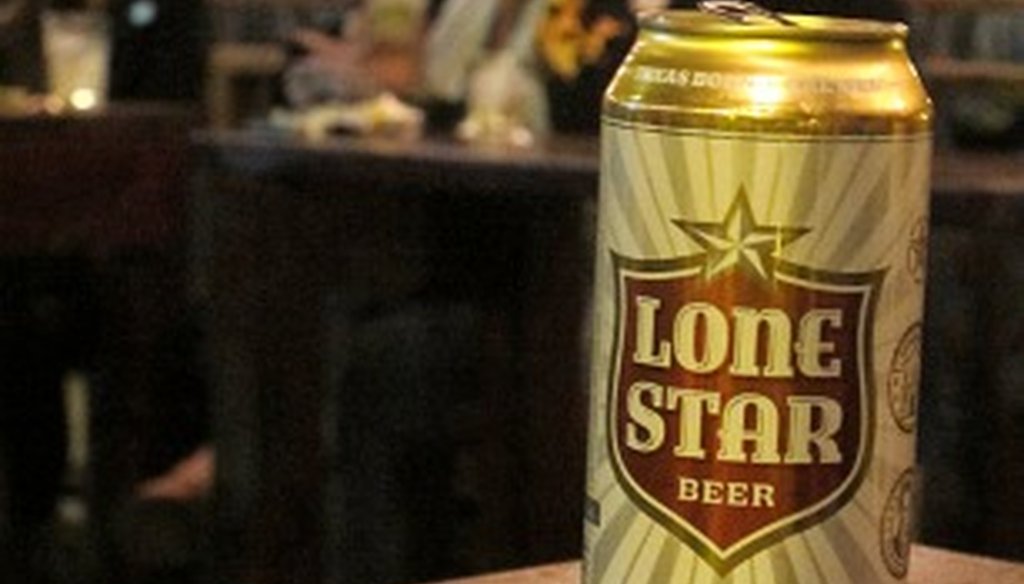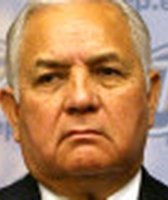Get PolitiFact in your inbox.

Sometimes beer fuels the Truth-O-Meter.
When San Antonio state Rep. Mike Villarreal recently piped up about the growth of the craft beer industry, he stepped into familiar Truth-O-Meter terrain.
Villarreal followed state Sen. Jeff Wentworth and Austin’s police chief, Art Acevedo, in drawing a truth test on for drinking-related proclamations.
Plugging legislation that would allow restaurants that brew their own beer to sell their bottled suds to a beer distributor, Villarreal suggested craft brewers are the future of the beer industry. "The only segment in the beer market that is growing is the craft beer segment," the Democrat said during a March 22 press conference about House Bill 660, which was left pending in a House committee.
The Colorado-based Brewers Association, a trade association representing craft brewers, defines a craft brewer as small (produces less than 6 million barrels a year), independent (less than 25 percent is owned by an alcoholic beverage industry member who isn’t a craft brewer) and traditional (at least 50 percent of its total production volume is malt beer or beer that enhances the flavor with grains such as barley or wheat).
According to an association press release, small and independent craft brewers saw production increase 11 percent and retail sales increase 12 percent in 2010 while total U.S. beer sales were down 2.2 percent in 2009 and 1 percent in 2010. Total beer volume dropped from 205.7 million barrels in 2009 to 203.6 million in 2010, the release says.
The Beer Institute pointed us to statistics showing that total estimated domestic beer production decreased 1.6 percent from 2009-10.
Harry Schuhmacher, editor of Beer Business Daily, a trade publication, told us that Villarreal’s claim is "definitely true." Craft beer "has really taken on a life of its own in the last four or five years," Schuhmacher said.
We rated Villarreal’s statement True. Wentworth’s alcohol-related claim didn’t fare as well.
In February, the San Antonio Republican told a national TV audience: "We don’t have bars on campus in Texas. It’s against the law... no alcohol allowed." He made the statement while defending his proposal requiring Texas colleges to allow concealed weapons on campus.
Our initial disbelief — what, no campus taverns? — held up.
Among places we checked: Wentworth’s undergraduate alma mater, Texas A&M University. Spokesman Jason Cook said: "We don’t have bars on campus, in the common term, but alcohol is allowed on campus and is served on campus under special circumstances." The University Club, a campus dining facility, hosts a happy hour; the 21-and-older crowd can enjoy a $2 scotch or $3 sangria, among drink specials, from 4-7 p.m. Wednesday through Friday, according to A&M’s web page about the club.
All told, we found two Texas universities that have bars on campus while other schools we contacted routinely serve alcohol in campus facilities. We also found no legal grounding for the Wentworth’s claim, which wasn’t simply wrong, but ridiculous — Pants on Fire.
Acevedo was quoted in November saying that Texas leads the nation in drunk-driving deaths.
In 2009, we learned, Texas tallied 1,235 alcohol-impaired fatalities, according to a report by the National Highway Transportation Safety Administration, which says the statistic reflects fatalities in crashes involving a driver or motorcycle rider with a blood alcohol concentration of .08 grams per deciliter or greater.
The 2009 Texas total exceeded by more than 250 the 950 alcohol-related driving fatalities in California, which was the No. 2 state in the dubious category.
Another checkpoint: NHTSA has posted state-by-state rates of alcohol-impaired driving fatalities per 100 million vehicle miles traveled for 2005 through 2008. Among the 10 states that had the most alcohol-impaired driving fatalities in 2009, Texas's rate per 100 million vehicle miles traveled, which ranged from .55 in 2007 to a high of .59 in 2006, exceeded that of all but South Carolina. Its rate, ranging from .81 in 2008 to .91 in 2007, was higher every year.
Finally, we divided the 2009 alcohol-impaired driving deaths for each state by U.S. Census Bureau population estimates for each state. Result: Texas trailed 15 states in deaths per resident.
Acevedo’s statement scored Mostly True on the Truth-O-Meter.
Peruse alcohol-connected fact checks by PolitiFact outfits nationally here. Here’s to you.
Our Sources
See related statements







































